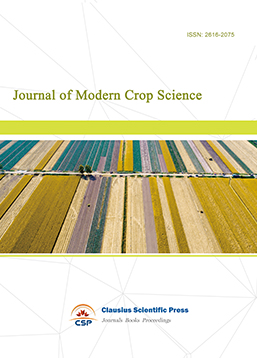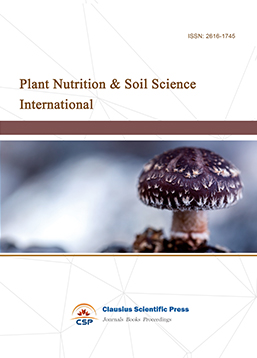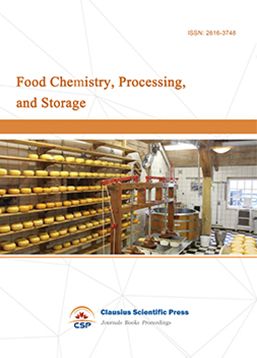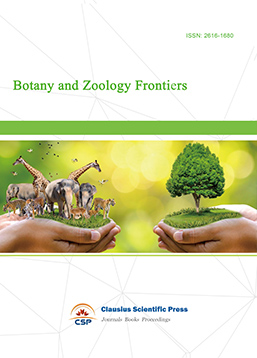Nutrient Intake Status, Existing Problems and Countermeasures of Chinese Residents in the Past 30 Years
DOI: 10.23977/afshn.2023.050101 | Downloads: 46 | Views: 2370
Author(s)
Jianping Liu 1,2, Yongtian Wu 2, Zhiheng Chen 3, Xuekai Wei 2
Affiliation(s)
1 College of Civil and Environmental Engineering, Hunan University of Science and Engineering, Yongzhou, Hunan, China
2 Bama Hetai Longevity Industry Co., Ltd., Bama, Guangxi, China
3 Department of Health Management of Xiangya Third Hospital, Central South University, Changsha, Hunan, China
Corresponding Author
Jianping LiuABSTRACT
Nutrients are the basic substances to promote human metabolism and maintain health, and their long-term unreasonable intake will increase the risk of chronic diseases among residents. The time series analysis method was used to comprehensively and systematically analyze the nutrient intake status, existing problems and adverse consequences of Chinese residents in the past 30 years. The analysis results show that the structural imbalance of nutrient intake caused by insufficient overall intake of nutrients, excess partial intake of nutrients and uneven overall intake of nutrients is the main problem of nutrient intake of Chinese residents, which is mainly manifested as "two more and four less", that is, more fat intake, more sodium intake, less mineral intake, less water intake, less vitamins intake, and less dietary fiber intake.There is a significant causal relationship between the long-term structural imbalance of nutrient intake and the high incidence of chronic diseases among Chinese residents. Effective measures can be taken to cope with the high incidence of chronic diseases by controlling the quality of nutrients intake, balancing the amount of nutrients intake, developing good daily eating habits, and improving the overall level of public awareness of nutrients.The research results provide a new theoretical perspective and application path for the prevention and treatment of chronic diseases in China, and have important theoretical value and practical significance for promoting the construction of a healthy China.
KEYWORDS
Nutrients, structural imbalances, chronic disease, countermeasureCITE THIS PAPER
Jianping Liu, Yongtian Wu, Zhiheng Chen, Xuekai Wei, Nutrient Intake Status, Existing Problems and Countermeasures of Chinese Residents in the Past 30 Years. Advances in Food Science and Human Nutrition (2023) Vol.5: 1-13. DOI: http://dx.doi.org/10.23977/afshn.2023.050101.
REFERENCES
[1] Fan Daiming. HIM, the only way for medical development in a new era. Medical Contention, 2017, 8 (03): 4-10. DOI: 10.13276/j.issn 1674-8913.2017.03.001.
[2] Wei Yujuan. The application of nutrients in treating chronic diseases. World's Latest Medical Information Abstract, 2018, 18 (41): 170-172.
[3] Micha Renata, Shulkin Masha L, Peñalvo Jose L, Khatibzadeh Shahab, Singh Gitanjali M, Rao Mayuree, Fahimi Saman, Powles John, Mozaffarian Dariush. Etiologic effects and optimal intakes of foods and nutrients for risk of cardiovascular diseases and diabetes: Systematic reviews and meta-analyses from the Nutrition and Chronic Diseases Expert Group (NutriCoDE). PloS one, 2017, 12(4): 202-205.
[4] Li Hanchao, Ryu Ho Kyung. Study on Relevance of Nutritional Status, Nutrient Intake, and Chronic Disease Risk based on Mini Nutritional Assessment (MNA) of Elderly People in Shandong Province of China. The Korean Journal of Community Living Science, 2017, 28(1):305-307.
Chao H L , Kyung H R . Study on Relevance of Nutritional Status, Nutrient Intake, and Chronic Disease Risk based on Mini Nutritional Assessment (MNA) of Elderly People in Shandong Province of China. The Korean Journal of Community Living Science, 2017, 28(1).
[5] Rice Beth H, Quann Erin E, Miller Gregory D. Meeting and exceeding dairy recommendations: effects of dairy consumption on nutrient intakes and risk of chronic disease. Nutrition reviews, 2013, 71(4):38-40.
[6] Zhang Qian, Hu Xiaoqi, Zou Shurong, Zuo Jiaolei, Liu Zhenhua, Ma Guansheng, et al. Summer water consumption of adult residents in four cities of China. Chinese Journal of Preventive Medicine, 2011 (08): 677-682.
[7] Liu Yuejiao. Report on the Nutrition and Chronic Disease Status of Chinese Residents (2020) [J]. China Food and Nutrition, 2020, 26 (12): 2. DOI: 10.19870/j.cnki.11-3716/ts.2020.12.01.
[8] Chae Jisuk, Kim Minjoo, Lee Jong Ho, Yoo Hye Jin. Body Fat Composition Enhances the Predictive Ability of Changes in White Blood Cell Levels Associated with the Risk of Chronic Disease Development. Journal of immunology (Baltimore, Md.: 1950), 2021.
[9] S Reddy Dr Malireddy. Importance of Bioavailable Calcium and Other Minerals to Reduce the Calcium Deficiency Symptoms, Aging, and Other Pertinent Diseases. Clinical Pharmacology & Biopharmaceutics, 2017, 06(03).
[10] Wood R.J. Calcium and phosphorus. In: Stipanuck MH, ed. Biochemical and physiological aspects of human nutrition. Philadelphia: WB Saunders Company, 2000:643:670.
[11] Michael J. Gonzalez. Severe Symptoms of Hypocalcemia: A Calcium Deficiency Disease. Vitamins & Minerals, 2021, 10(11).
[12] Muhammad Nadeem Aslam, James Varani. The Western-Style Diet, Calcium Deficiency and Chronic Disease. Nutrition & Food Sciences, 2016, 6(3).
[13] Hu Wenli, Zhao Chong, Hu Hongbo, Yin Shutao. Food Sources of Selenium and Its Relationship with Chronic Diseases. Nutrients, 2021, 13(5).
[14] Qi Qiwang, Shi Chengyu, Cheng Dongxu. Association between Selenium in Soil and Diabetes in Chinese Residents Aged 35–74 Years: Results from the 2010 National Survey of Chronic Diseases and Behavioral Risk Factors Surveillance. Biomedical and Environmental Sciences, 2020, 33(4).
[15] Rose BD, Post D, Rose B, Narins R. Clinical physiology of acid-base and electrolyte disorders. New York, NY: McGraw-Hill Companies, 2000.
[16] Ma Grace X, Bhimla Aisha, Zhu Lin, Beeber Maayan, Aczon Ferdinand, Tan Yin, Quinn Sally Boyle, Khan Omar, Gadegbeku Crystal A. Development of an Intervention to Promote Physical Activity and Reduce Dietary Sodium Intake for Preventing Hypertension and Chronic Disease in Filipino Americans. Journal of racial and ethnic health disparities, 2020, 8 (prepublish).
[17] Leigh Robert S., Kaynak Bogac L. Vitamin A as a Transcriptional Regulator of Cardiovascular Disease. Hearts, 2020, 1(2).
[18] Chinese Medical Association. Clinical application of vitamin and mineral supplements in disease prevention and treatment: expert consensus vitamin B2. Chinese Journal of Clinical Nutrition, 2014, 22 (04): 258.
[19] Hu Bin, Huang Yunping, Mao Junjie, Guan Chao, Yu Ronghuan, Yang Haihua, Ke Zunji. Study on the correlation between vitamin B1 deficiency and chronic obstructive pulmonary disease in the elderly. Gerontology and Health Care, 2015, 21 (01): 46-49.
[20] Liu Xing, Yang Wanshui, Petrick Jessica L. Higher intake of whole grains and dietary fiber are associated with lower risk of liver cancer and chronic liver disease mortality. Nature Communications, 2021, 12(1).
[21] Li Miao, Liu Kun, Zheng Lixian, Dai Yinan, Sun Kejuan, Gao Ting, et al. Research progress on dietary fiber, intestinal microbes and related diseases. Journal of Food Safety and Quality Inspection, 2021, 12 (01): 249-254. DOI: 10.19812/j.cnki.jfsq11-5956/ts. 2021.01.049.
[22] Feng Yan, Wei Siang, Wang Lei, Feng Jianghao. Meta-analysis of the correlation between dietary fiber intake and cardiovascular disease risk. China Food and Nutrition, 2021, 27 (09): 10-12.
| Downloads: | 2590 |
|---|---|
| Visits: | 90150 |

 Download as PDF
Download as PDF



